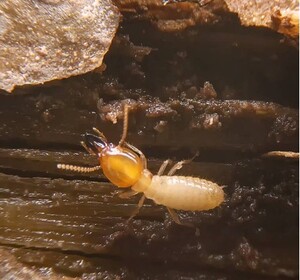Insect-Specific Treatments: Targeted Solutions for Every Pest Problem
الجسم
Not all insects are created equal—and neither are the solutions needed to control them. From stubborn cockroaches to elusive bed bugs and damaging termites, different insects require unique strategies for effective management. That’s where insect-specific treatments come in. These tailored pest control methods are designed to target the behavior, biology, and nesting habits of particular insect species, delivering better, faster, and more lasting results.
In this post, we’ll explore the importance of insect-specific treatments, the most common types used in pest control today, and why this targeted approach is the future of safer, more effective pest management.
Why Insect-Specific Treatments Matter
Using a generic pest control spray or trap might temporarily reduce insect populations, but it rarely solves the root of the problem. That’s because different insects require different approaches based on:
-
Life cycle
-
Feeding habits
-
Breeding locations
-
Chemical resistance levels
Insect-Specific Treatments allow pest control professionals to use the right product, in the right place, at the right time—without unnecessary chemical exposure to humans, pets, or the environment.
Common Insects That Require Targeted Treatments
Let’s take a closer look at some pests that demand a specific treatment approach:
1. Termites
Termites are known as “silent destroyers” because they can chew through wood, flooring, and even wallpaper undetected. A general pesticide won’t work on a hidden colony.
Specific Treatment:
-
Baiting systems to eliminate the entire colony
-
Soil-applied termiticides for long-term prevention
-
Wood treatments using borate solutions
2. Bed Bugs
These tiny nighttime feeders hide in mattresses, cracks, and fabrics. They’re resistant to many standard sprays, making DIY efforts ineffective.
Specific Treatment:
-
High-heat treatments (above 120°F) to kill eggs and adults
-
Specialized insecticides applied to seams, bed frames, and baseboards
-
Cryogenic (freezing) treatments in some cases
3. Cockroaches
Roaches are resilient and reproduce rapidly. They require both sanitation improvements and baiting strategies to stop infestations at the source.
Specific Treatment:
-
Gel baits placed in hiding spots
-
Growth regulators to prevent reproduction
-
Crack and crevice treatments in kitchens and bathrooms
4. Ants
Different ant species (like carpenter ants, fire ants, or odorous house ants) require different tactics. A wrong treatment can actually make the problem worse by scattering the colony.
Specific Treatment:
-
Species-specific bait that workers bring back to the colony
-
Barrier sprays and nest elimination
-
Indoor and outdoor perimeter treatment
5. Mosquitoes
General bug sprays wear off quickly and don’t address mosquito breeding grounds.
Specific Treatment:
-
Larvicides applied to standing water
-
Fogging or misting in shaded areas
-
Natural repellents and barrier protection in outdoor living spaces
Benefits of Insect-Specific Treatments
✅ More Effective Results
Because these treatments are tailored to the exact pest, they work faster and more thoroughly than general-purpose products.
✅ Safer for Families and Pets
Targeted application means fewer chemicals sprayed broadly around your home. Treatments are only used where and when they’re needed.
✅ Environmentally Friendly
Precision in pest control helps reduce runoff and pollution, aligning with green pest management principles.
✅ Cost-Effective in the Long Run
While custom treatments might seem more expensive upfront, they reduce the need for repeat visits and eliminate costly damage from prolonged infestations.
When to Consider Insect-Specific Pest Control
You should always consider targeted treatment when:
-
You’ve tried DIY solutions without success
-
The same pest keeps coming back
-
You’re dealing with multiple insect types at once
-
The pest is known to carry disease or cause property damage
-
You need fast, reliable relief for a business or high-traffic home
Professional pest control providers will inspect your property and design a plan based on the specific insects identified, ensuring precision and protection with every visit.
DIY vs. Professional Insect-Specific Treatments
While there are over-the-counter options labeled for certain insects, they rarely offer the depth of a professional treatment. Licensed exterminators have access to stronger formulas, better equipment, and deeper knowledge of insect biology and habits.
Professionals also perform follow-up inspections and make adjustments if needed—something store-bought products just can’t match.
Final Thoughts
Pest control is not one-size-fits-all—and with today’s smarter, safer solutions, it doesn’t have to be. Insect-specific treatments are a modern, effective way to handle infestations at their root, using customized methods that match the pest’s behavior and biology.










تعليقات